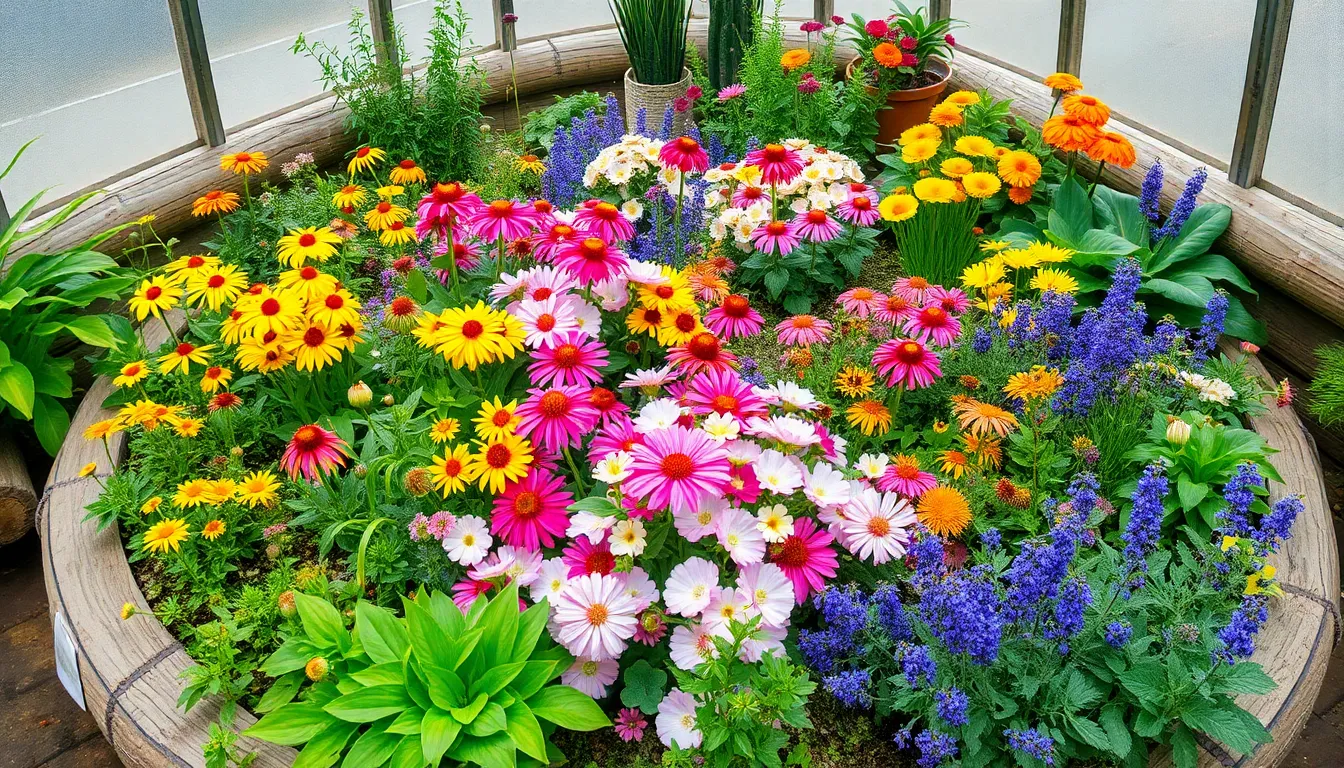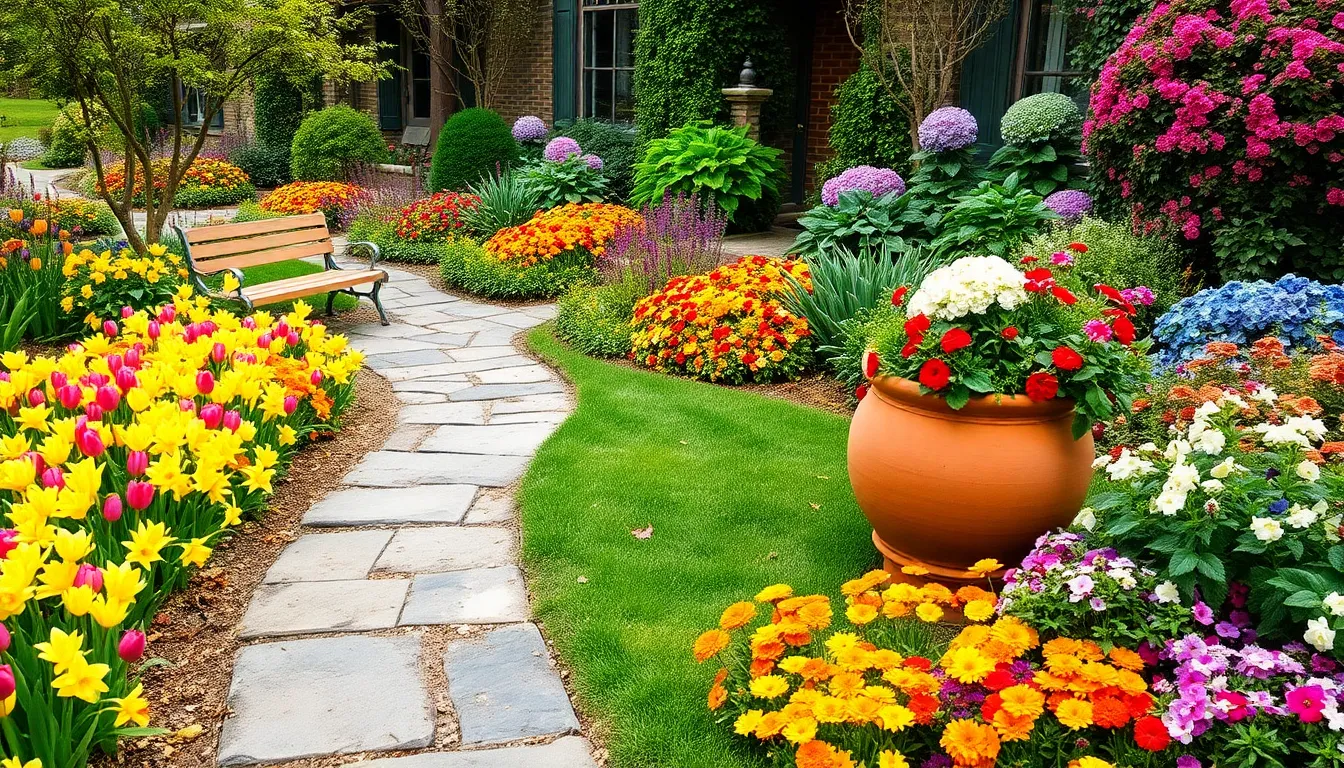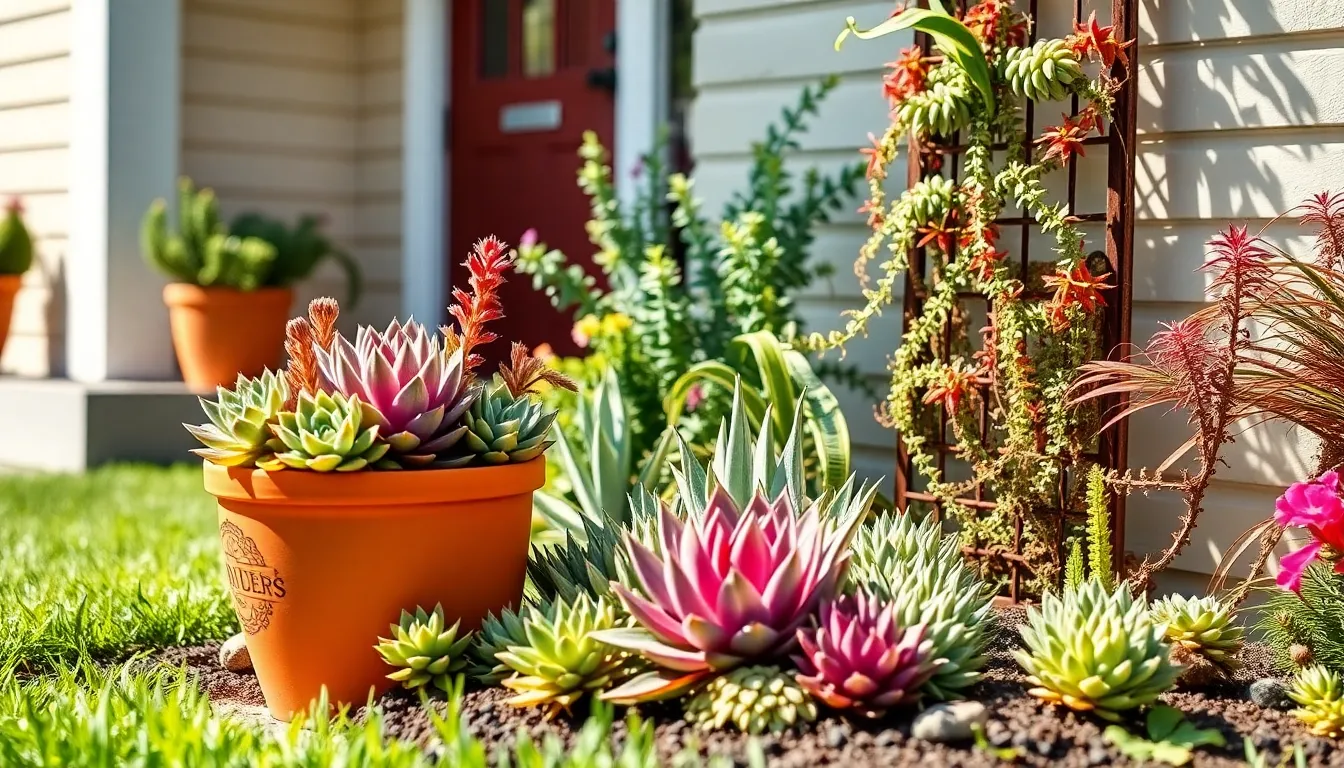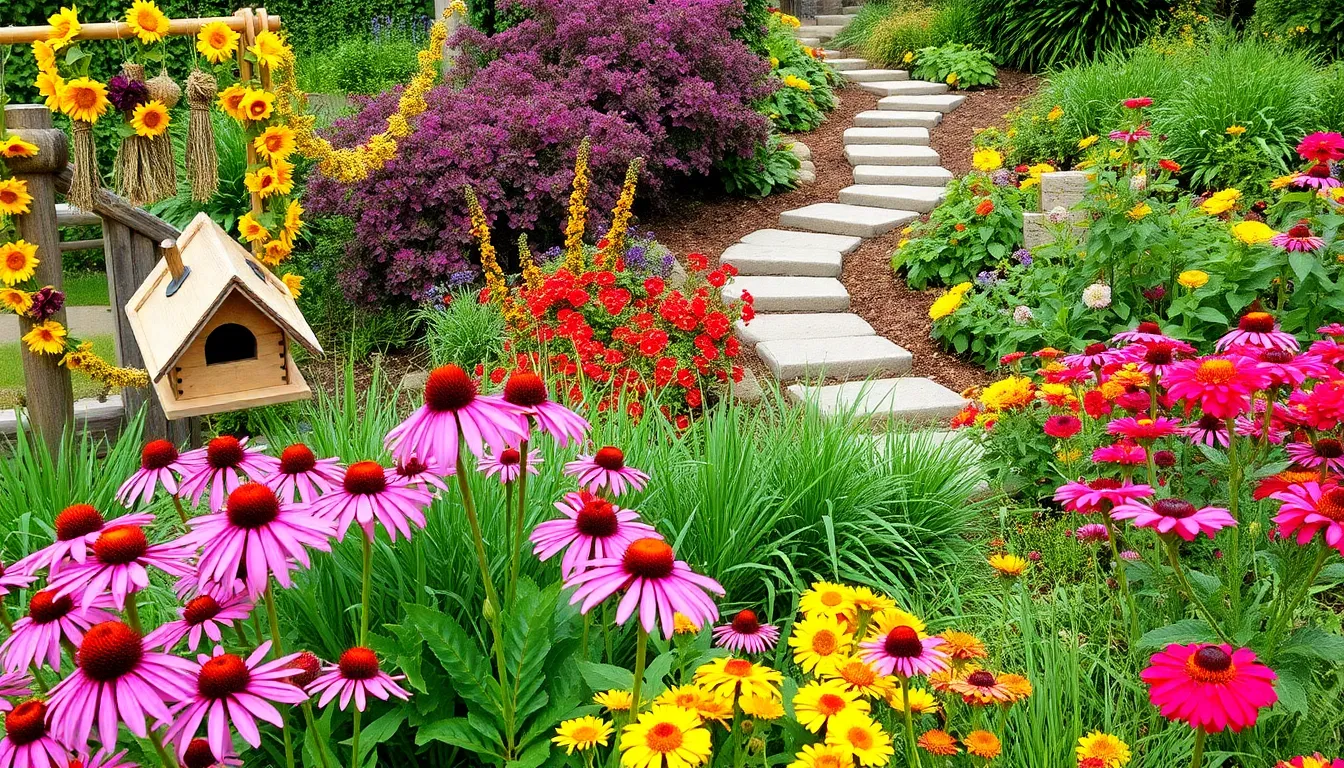Imagine stepping into your garden, where vibrant blooms sway gently and the air hums with the lively dance of bees, butterflies, and hummingbirds. A pollinator garden is more than just a feast for the eyes; it’s a haven for essential creatures that play a crucial role in sustaining our ecosystems. Whether you’re just beginning your gardening journey or have years of experience, creating a space that invites these beneficial visitors is both rewarding and impactful. The beauty of a pollinator garden lies in its ability to transform your outdoor space into a dynamic, living tapestry that supports biodiversity.
In this article, we’ll explore 12 creative pollinator garden setups that cater to every gardener’s taste and space, from small balcony pots to expansive backyard beds. You’ll discover how easy it is to select plants that not only thrive in your local climate but also attract a variety of pollinators, ensuring your garden is buzzing with life. We’ll delve into innovative designs that maximize your garden’s potential while providing the perfect habitat for these vital creatures. Whether you’re looking to add a whimsical touch or a structured layout, these ideas will inspire you to cultivate a sanctuary that benefits both you and the environment.
As we journey through these setups, you’ll gain practical tips on plant combinations, garden placement, and maintenance routines that keep your garden flourishing year-round. Our goal is to equip you with the knowledge and confidence to create a pollinator paradise that is as sustainable as it is beautiful. By the end of this article, you’ll not only have a plan for a thriving pollinator garden but also a deeper appreciation for the important role these creatures play in our world. Let’s dive in and discover how you can make a positive impact right in your own backyard.
Choosing Ideal Pollinator Plants
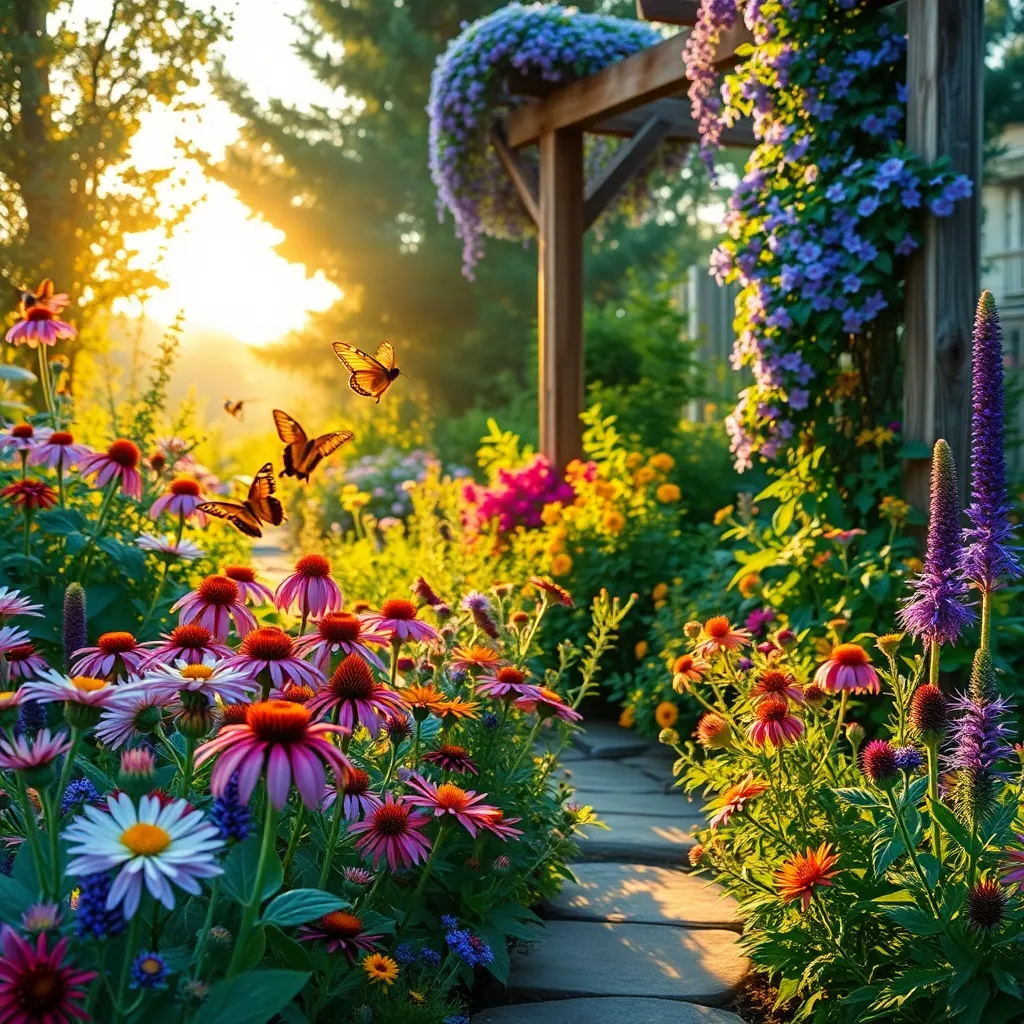
When selecting pollinator plants, focus on species that offer abundant nectar and pollen throughout the growing season. Native plants are often the best choice because they have co-evolved with local pollinators and require less maintenance.
Consider including a variety of flower shapes and colors to attract different pollinators, such as bees, butterflies, and hummingbirds. For instance, tubular flowers like penstemon attract hummingbirds, while flat-topped flowers like coneflowers are perfect for bees and butterflies.
Ensure your pollinator plants are suitable for your climate and soil conditions to thrive in your garden. For optimal growth, test your soil pH and amend it if necessary, aiming for a well-drained, nutrient-rich environment.
Watering practices should be tailored to the needs of each plant species, with most native plants requiring deep, infrequent watering to encourage deep root growth. Monitoring your garden’s moisture levels will help you determine when additional watering is necessary, ensuring plants are neither overwatered nor left too dry.
Designing with Native Flowers
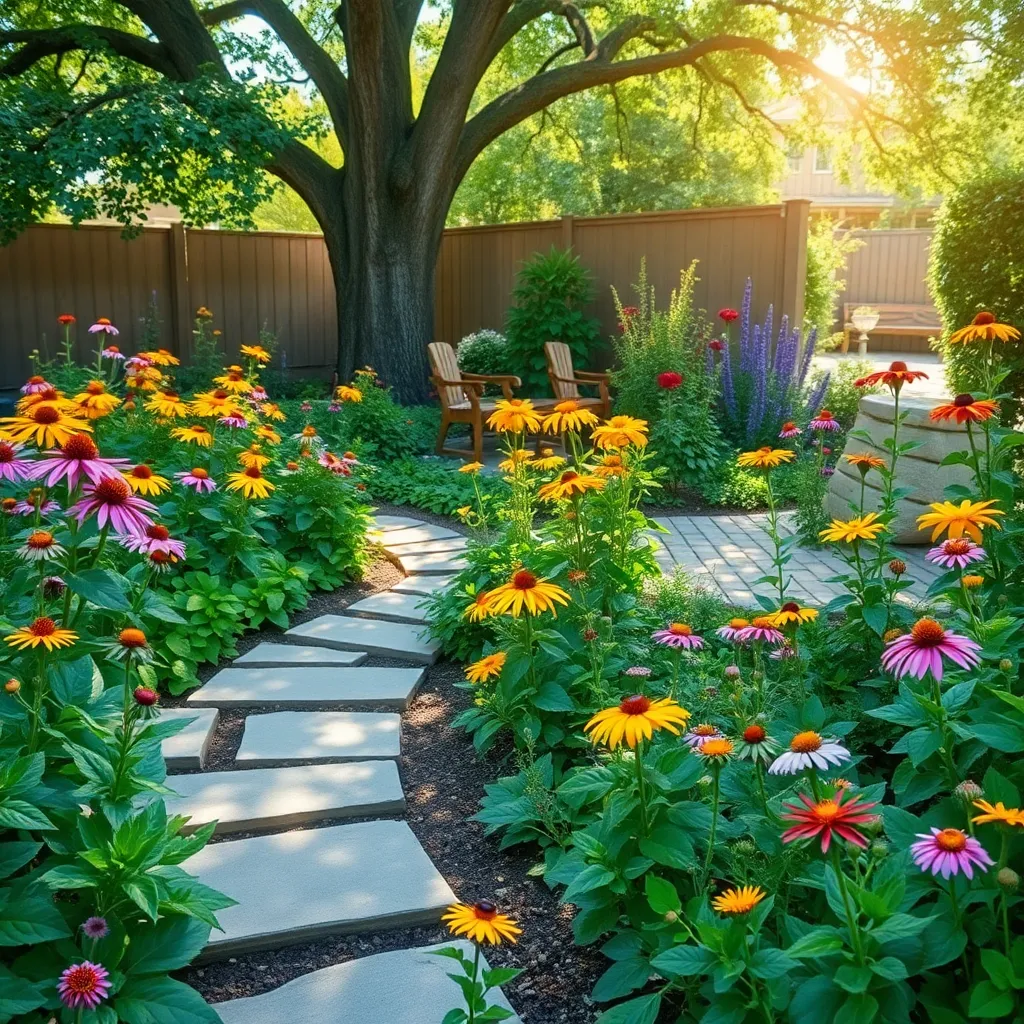
Designing with native flowers is a rewarding way to attract pollinators while supporting local ecosystems. Start by researching which native species thrive in your area, as they are best adapted to your region’s soil and climate conditions.
Consider planting a mix of perennials and annuals to ensure continuous blooms throughout the growing season. Perennials like purple coneflower and black-eyed Susan are excellent choices, as they require minimal maintenance once established.
For a vibrant display, plant in clusters of the same species to make it easier for pollinators to find and feed on them. Use native grasses as a backdrop to create a naturalistic look and provide additional habitat for insects.
Incorporate plants that offer various flower shapes and colors to attract diverse pollinator species. For instance, tubular flowers like bee balm are perfect for hummingbirds, while flat-topped flowers like yarrow are ideal for butterflies.
Vertical Gardens for Pollinators
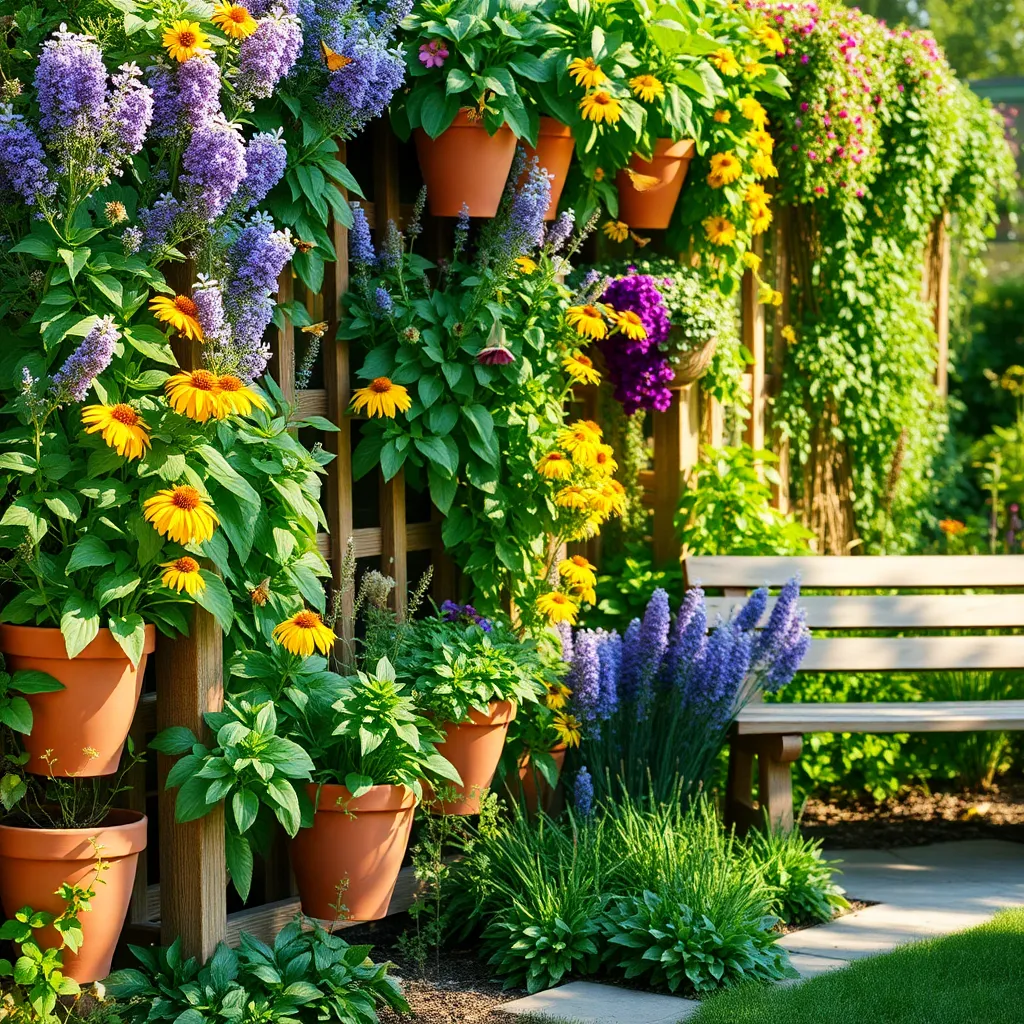
Vertical gardens can transform small spaces into thriving ecosystems for pollinators. Start by choosing plants that have a high nectar yield, such as honeysuckle, lavender, and climbing roses, which can all be trained to grow vertically.
Ensure your vertical structure supports plant growth while allowing easy access for pollinators. Use materials like trellises, obelisks, or even walls fitted with pocket planters to create a stable environment.
For beginners, begin with a strong, well-draining potting mix and water consistently, especially during dry spells. More experienced gardeners might incorporate a drip irrigation system to maintain optimal moisture levels and improve efficiency.
Provide your vertical garden with at least six hours of sunlight daily for the best blooming results. Consider adding companion plants like basil or zinnias at the base of your vertical setup to attract a diverse range of pollinators.
Incorporating Water Features

Incorporating water features into your pollinator garden can create a haven for various beneficial insects. Birdbaths, small ponds, or even a simple water dish can attract bees, butterflies, and other pollinators who need water for hydration and cooling.
When setting up a water feature, consider the placement in relation to sunlight and plant coverage. Ideally, water features should be positioned where they receive morning sun and afternoon shade to maintain a comfortable temperature for visiting pollinators.
Regular maintenance of your water feature is crucial to keep it attractive and safe. Change the water every couple of days to prevent stagnation and mosquito breeding, and clean the surfaces to remove algae and debris.
For those interested in advanced setups, adding aquatic plants like water lilies can enhance the ecosystem. These plants provide resting spots and additional nectar sources for pollinators, enriching the biodiversity of your garden.
Creating Habitat Variety
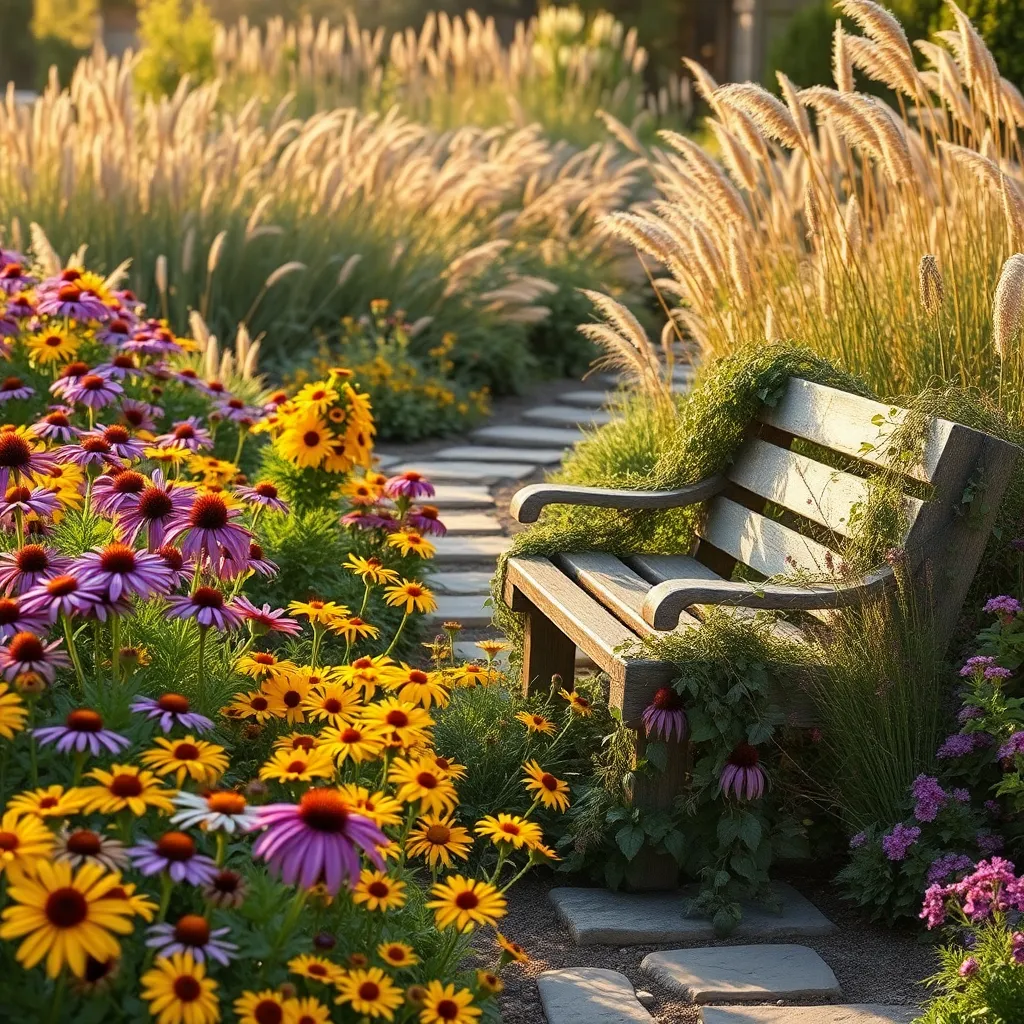
Creating a variety of habitats within your garden can significantly boost its appeal to pollinators. By incorporating diverse plant types, structures, and micro-environments, you will cater to a wide array of pollinator species.
Start by introducing different plant layers to your garden, including ground covers, shrubs, and trees. This layered approach offers multiple hiding spots and nesting sites, ensuring a welcoming environment for various pollinators.
Consider including both sun-loving and shade-tolerant plants to cater to species with different light preferences. For instance, plant sun-loving wildflowers like coneflowers and black-eyed Susans in open areas, while hostas and ferns can thrive in shaded sections.
To enhance habitat diversity, integrate some native plant species that are adapted to your local environment. Native plants often require less maintenance, thrive in local soil conditions, and provide familiar food sources for local pollinators.
For advanced gardeners, creating microclimates using rocks or logs can offer additional benefits. These structures provide essential basking spots and shelter, contributing to a more dynamic and supportive pollinator habitat.
Seasonal Bloom Strategies
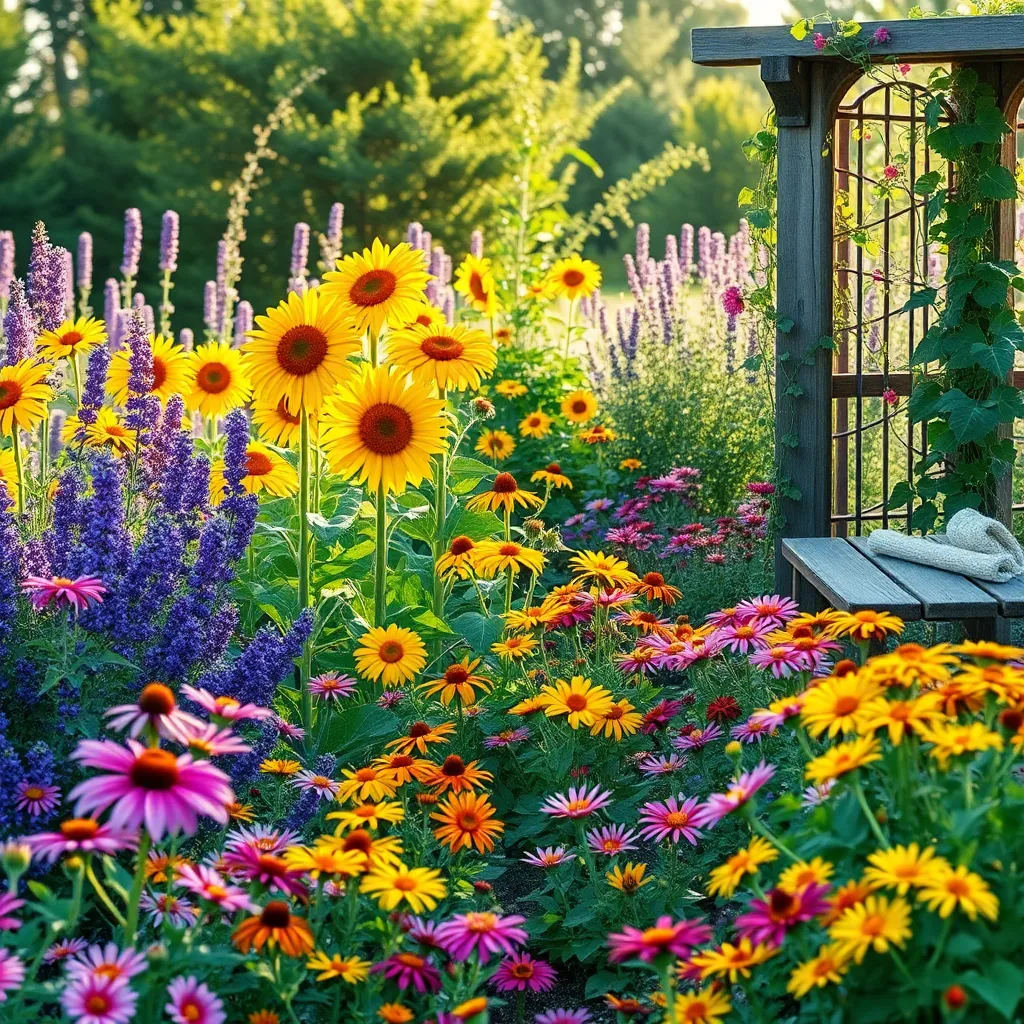
Timing your plant selection for seasonal blooms can dramatically enhance the appeal of a pollinator garden. Start by choosing a mix of early, mid, and late-season bloomers to ensure continuous nectar sources for pollinators.
Consider plants like crocus and snowdrops, which emerge early in the season, providing crucial sustenance for bees just waking from winter. Mid-season, introduce vibrant choices such as echinacea and bee balm, which thrive in well-drained soil and full sun.
In late summer and fall, asters and goldenrod can keep your garden buzzing with activity. These plants are robust and require minimal maintenance, making them ideal for gardeners of all experience levels.
For those seeking an advanced challenge, try succession planting with annuals like cosmos and zinnias. By staggering their planting times, you can extend their blooming period, offering a consistent food source for pollinators well into the cooler months.
Utilizing Container Gardens
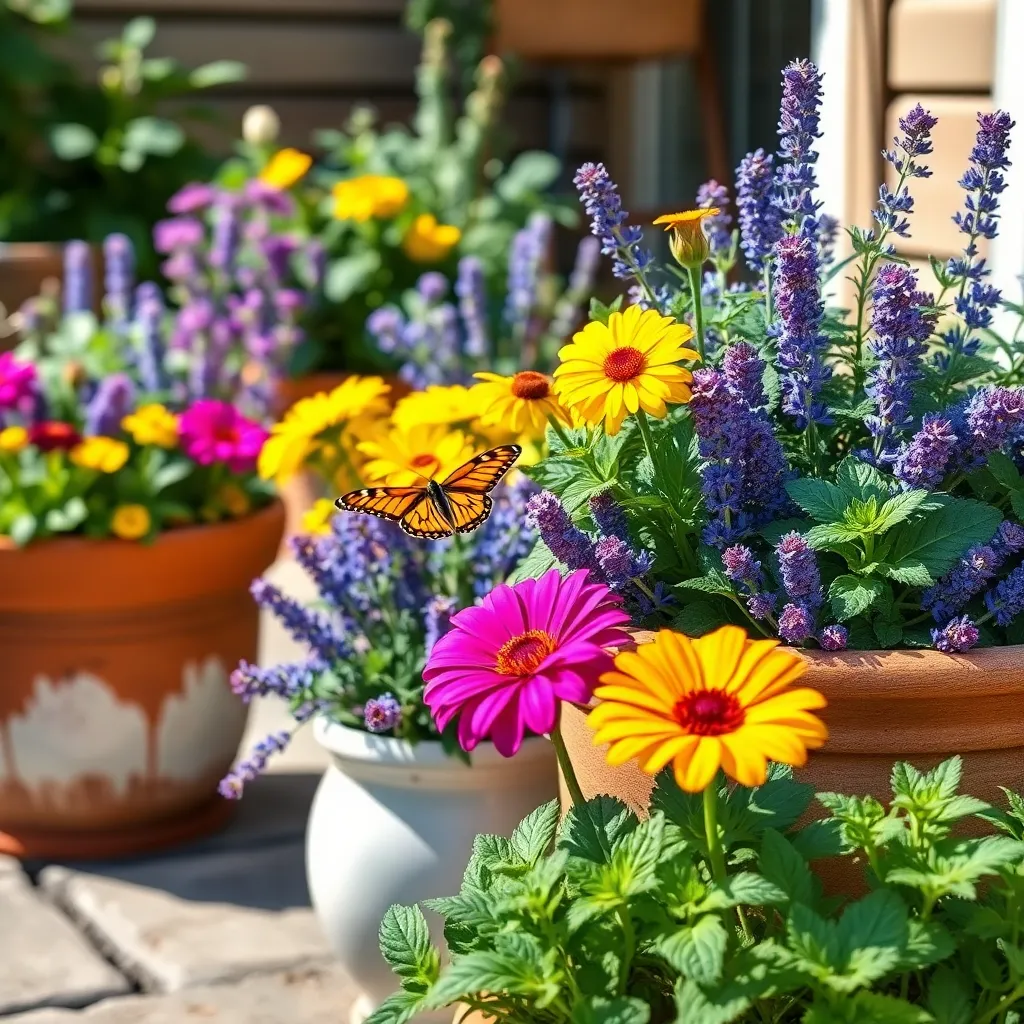
Container gardens are a versatile way to attract pollinators, especially if you’re working with limited space. Choose containers with good drainage and fill them with a high-quality potting mix rich in organic matter to provide a healthy start for your plants.
Consider planting a mix of flowering species that bloom at different times to ensure continuous attraction for pollinators. Plants like lavender, marigolds, and zinnias are excellent choices for containers and will draw in bees, butterflies, and hummingbirds.
Ensure your container plants receive adequate sunlight, as most pollinator-friendly plants require at least 6 hours of direct sunlight per day. Water your containers regularly, but avoid overwatering by allowing the top inch of soil to dry out between watering sessions.
For advanced gardeners, experimenting with vertical stacking or tiered containers can maximize space and create a layered effect that is both functional and aesthetically pleasing. Incorporate companion planting techniques by pairing herbs like basil and thyme alongside your flowers to enhance growth and deter pests naturally.
Crafting Bee-Friendly Borders
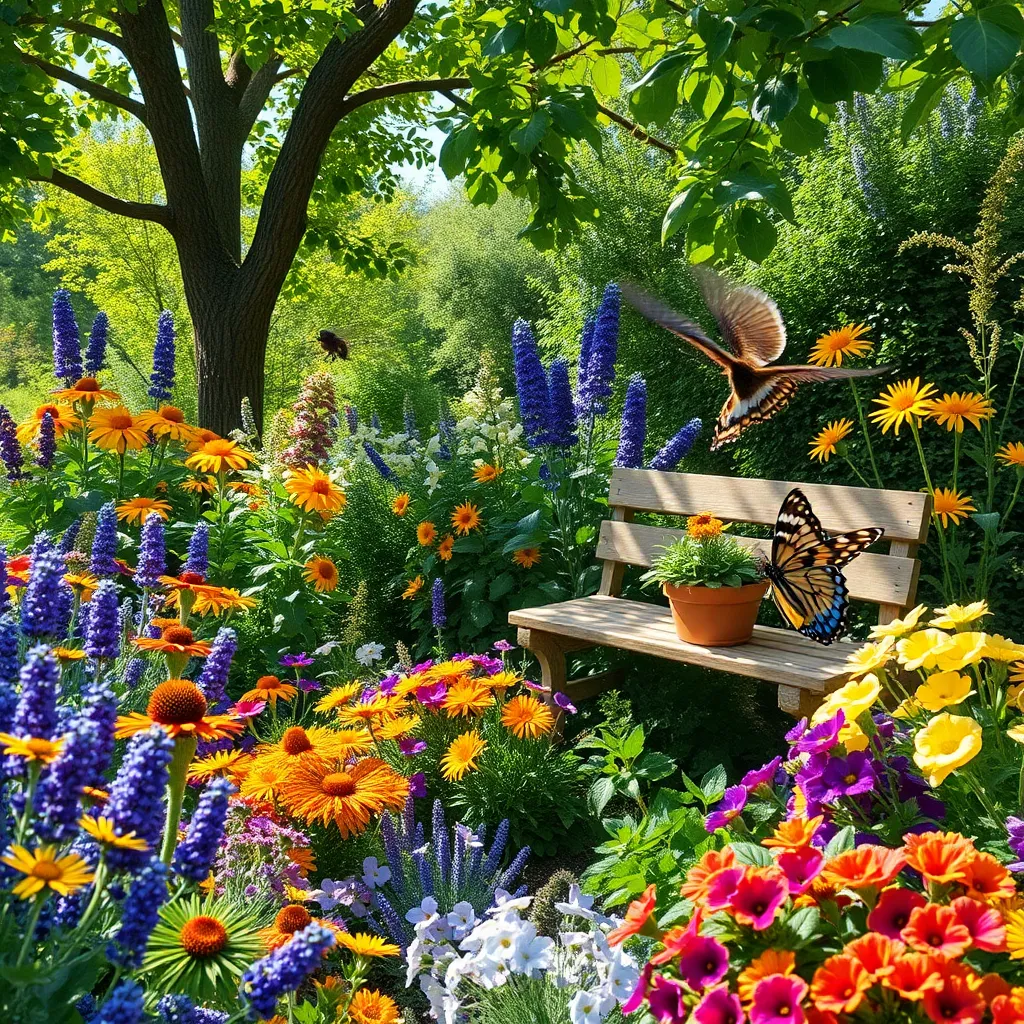
Creating a bee-friendly border involves selecting plants that provide abundant nectar and pollen. Consider using a mix of perennials like lavender, coneflower, and black-eyed Susan, which are known to attract bees throughout their flowering seasons.
Planting in clusters rather than single rows can make your garden more inviting to bees. This arrangement allows bees to forage more efficiently, reducing the energy they spend flying and increasing their pollination effectiveness.
Ensure your border receives plenty of sunlight, as most bee-friendly plants thrive in full sun conditions. Aim for at least six to eight hours of sunlight daily, and choose well-draining soil to prevent root rot in your plants.
Water your bee-friendly border deeply but infrequently to encourage deep root growth and drought tolerance. Typically, watering once a week should suffice, but always adjust based on your local climate and rainfall patterns.
Butterfly Garden Essentials
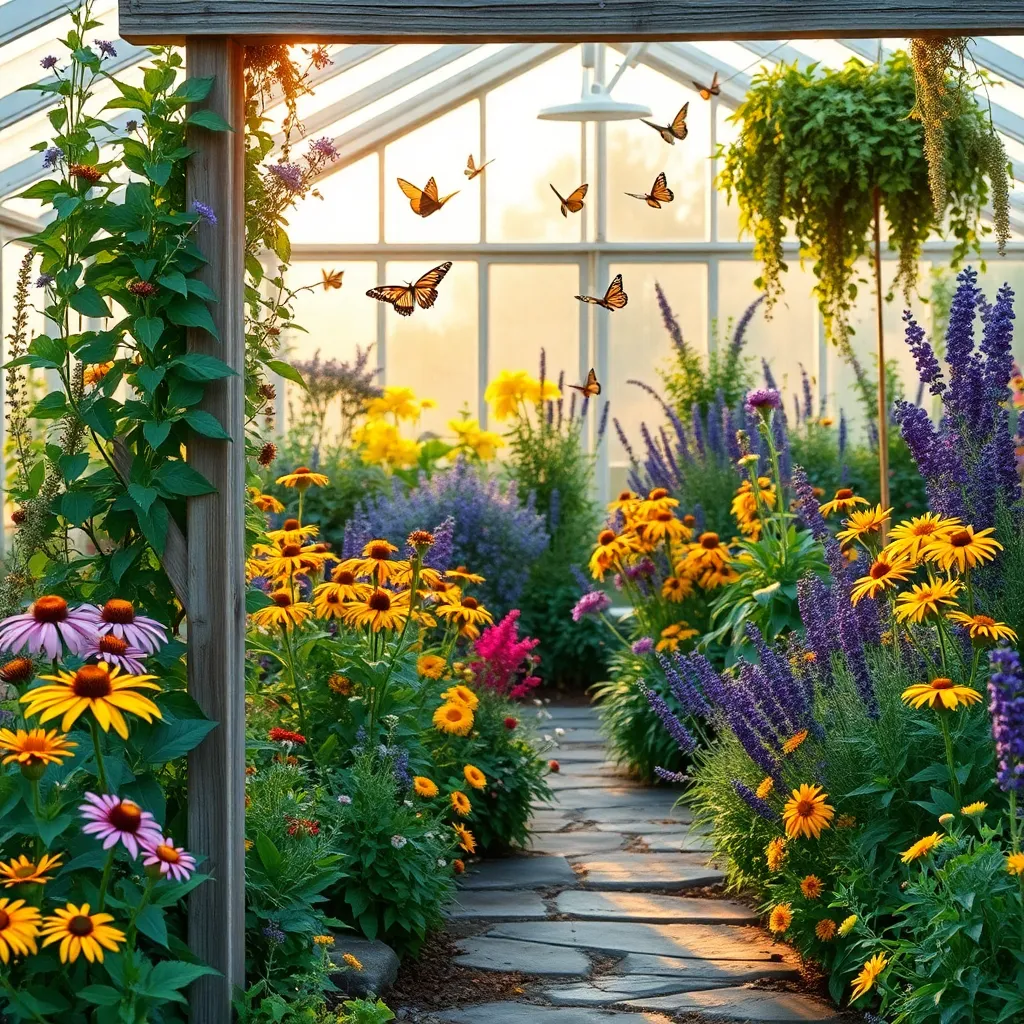
Creating a butterfly garden is a delightful way to attract these vibrant pollinators to your space. Choose a sunny location, as butterflies are cold-blooded and need warmth to fly and feed effectively.
Incorporate a variety of nectar-rich flowers to provide continuous blooms throughout the seasons. Consider planting milkweed, lantana, and coneflowers, which are favorites among many butterfly species.
Additionally, providing host plants for caterpillars is essential for a thriving butterfly population. For example, plant parsley, dill, and fennel to support species such as the swallowtail butterfly.
Ensure your garden has a shallow water source to give butterflies a place to drink and cool off. You might consider using a shallow dish filled with sand and water, allowing the butterflies to perch safely.
For more experienced gardeners, experimenting with different soil types can enhance plant growth and attract more butterflies. Loamy soil enriched with organic matter generally provides the best conditions for a diverse array of butterfly-friendly plants.
Nighttime Pollinator Attractors
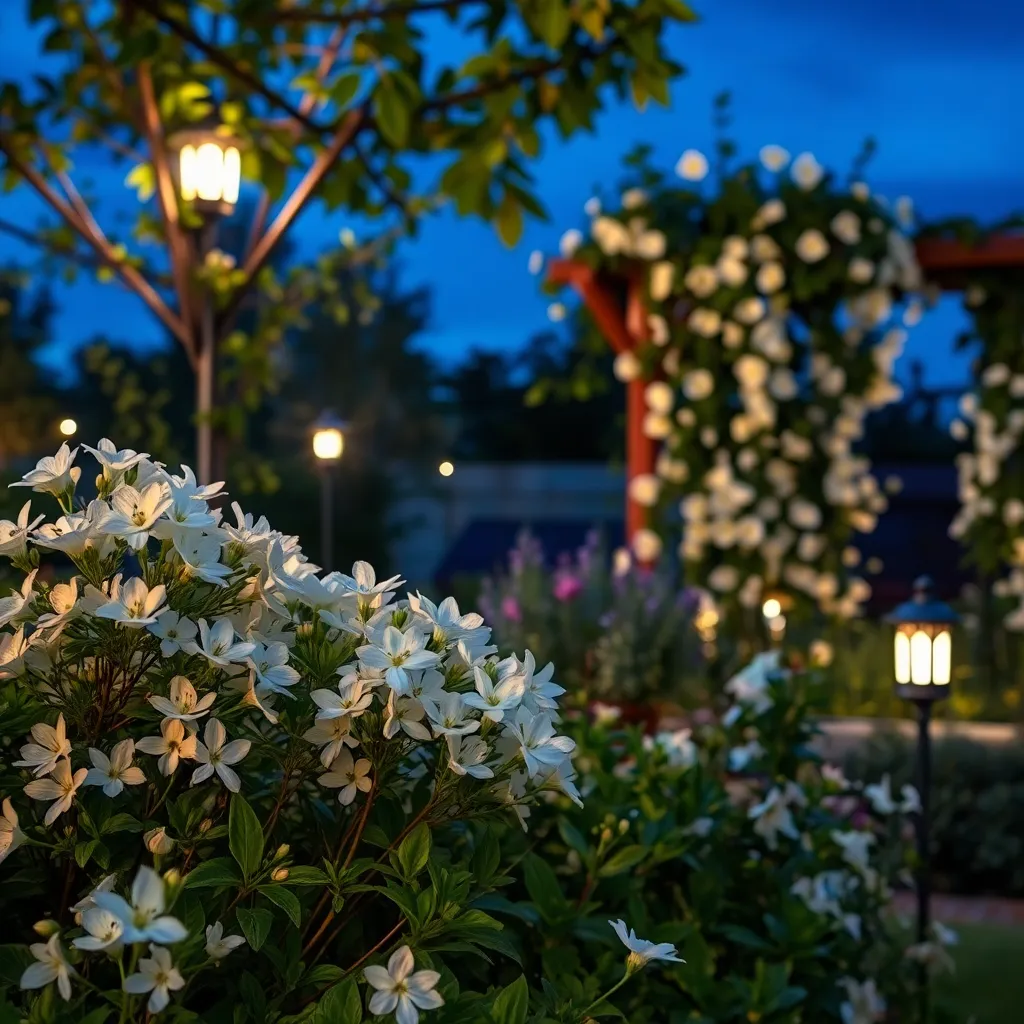
When planning a garden to attract nighttime pollinators, consider planting species that bloom after dusk. Flowers like evening primrose and moonflower are perfect choices, as their blooms open at night, releasing sweet fragrances that draw in nocturnal creatures.
To thrive, these plants require well-drained soil with a pH level between 6.0 and 7.0. Water them deeply once a week, ensuring the soil remains moist but not waterlogged, especially during blooming periods.
Incorporate plants with white or pale-colored flowers, as they reflect moonlight and stand out in the dark. Options such as white jasmine and night-blooming jessamine are not only visually appealing but also highly effective at attracting moths and other night pollinators.
For advanced gardeners, creating a layered garden that combines low-growing herbs like thyme with tall, fragrant flowers can maximize space and appeal. This approach not only enhances the habitat but also provides additional nectar sources, benefiting a wider range of pollinators throughout the night.
Sustainable Garden Practices
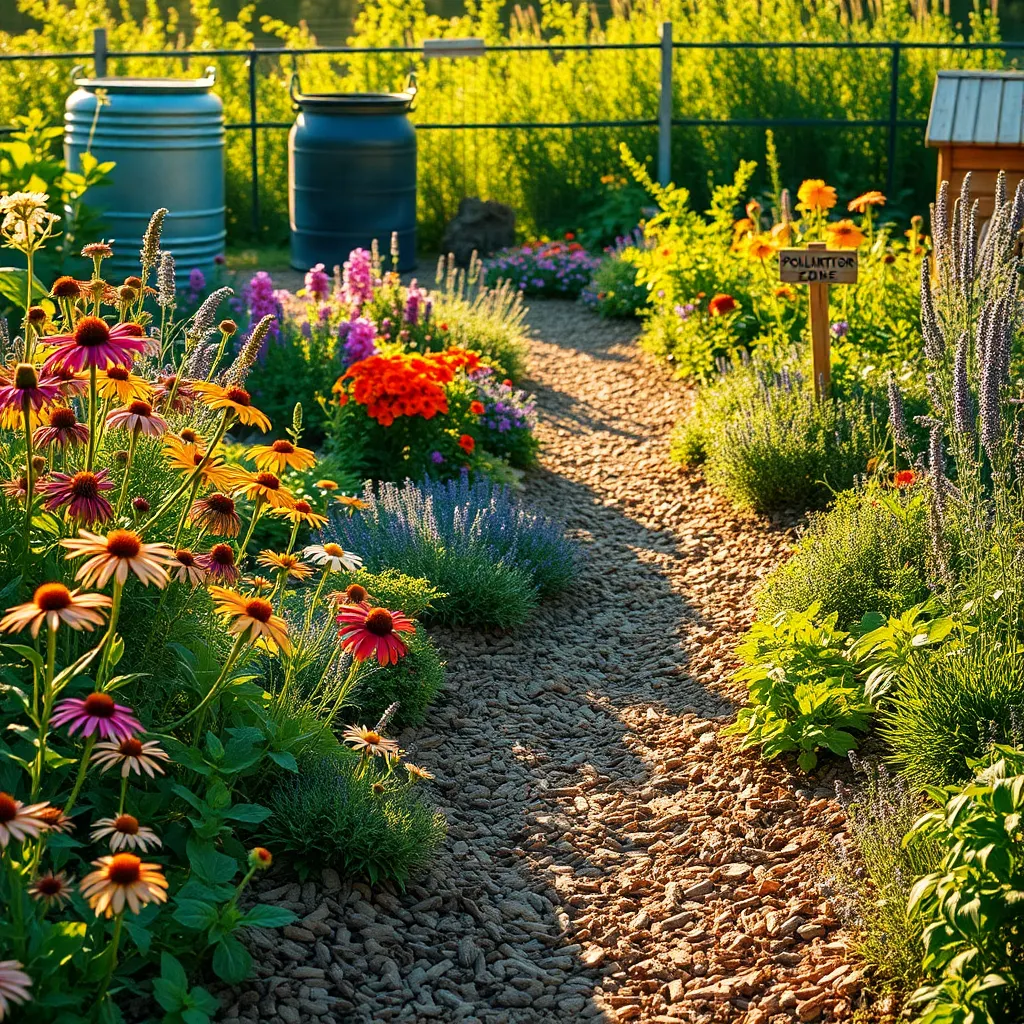
Integrating sustainable practices into your pollinator garden not only benefits the environment but also enhances the health of your plants. Begin by using organic fertilizers and compost to enrich the soil, which encourages robust plant growth and attracts beneficial insects.
Consider planting native species, as they are naturally adapted to local climates and conditions, reducing the need for excessive watering and pest control. Native plants also provide essential food and habitat for local pollinators, ensuring a thriving ecosystem in your garden.
Implementing a mulching strategy can significantly reduce water evaporation and suppress weeds, maintaining soil moisture and temperature. Choose biodegradable mulches like straw or wood chips, which will break down over time, adding nutrients back into the soil.
For more advanced gardeners, consider setting up a rainwater collection system to irrigate your garden sustainably. Rain barrels can be connected to gutter downspouts, providing a free and eco-friendly water source that reduces reliance on municipal water supplies.
Monitoring and Maintenance Tips
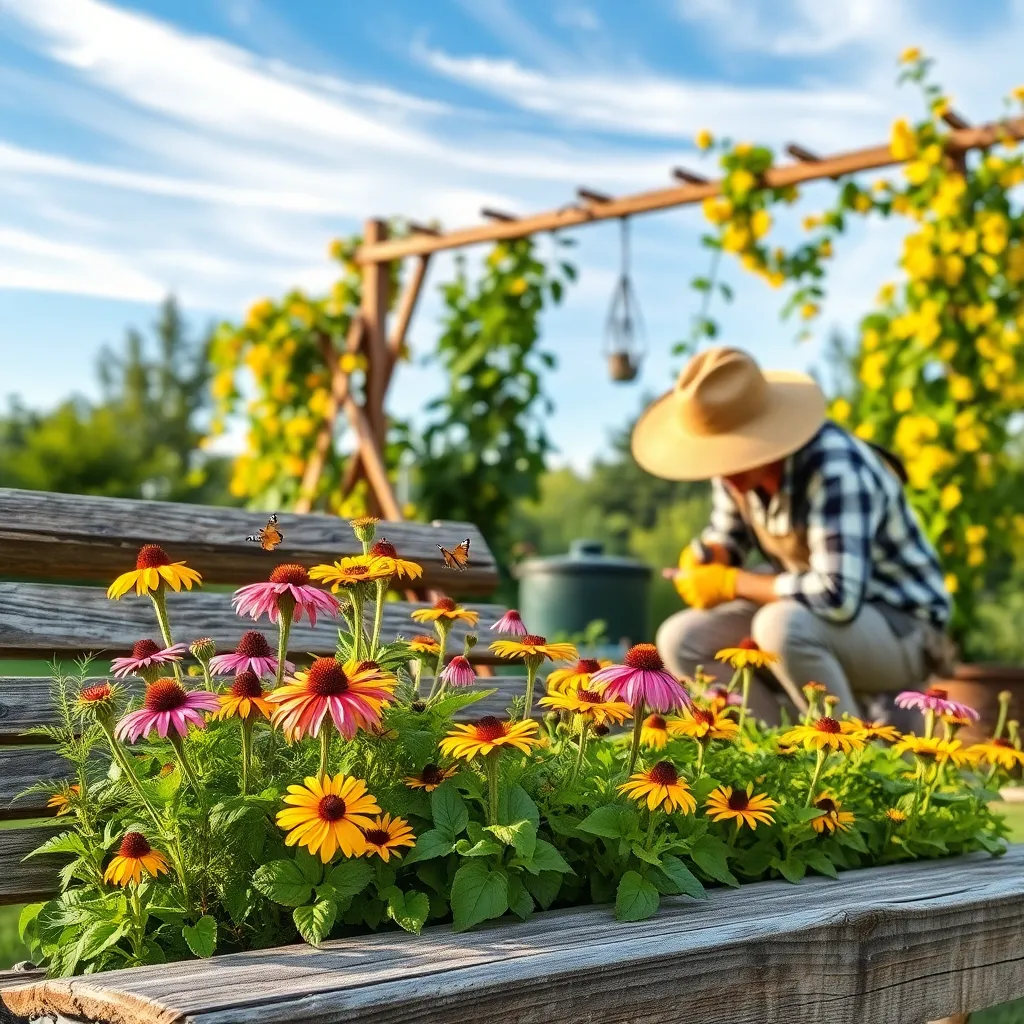
Regularly monitoring your pollinator garden is essential to ensure its health and vibrancy. Check your plants weekly for signs of pests or disease, and act swiftly to manage any issues that arise.
Watering is crucial, especially during dry spells, to keep your plants thriving. Most pollinator plants prefer well-drained soil, so ensure your garden has adequate drainage to prevent root rot.
Consider using a mulch layer to conserve soil moisture and suppress weeds. This not only protects your plants but also creates a more inviting environment for pollinators by retaining soil temperature.
For advanced gardeners, implementing a companion planting strategy can optimize space and resources. Pair plants that complement each other in terms of nutrient needs and growth habits to enhance the overall ecosystem of your garden.
Conclusion: Growing Success with These Plants
In exploring the “12 Creative Pollinator Garden Setups,” we’ve uncovered a delightful metaphor for cultivating thriving relationships. Just as various garden setups cater to different pollinators, our relationships blossom when we nurture them with understanding, communication, and creativity. Each setup highlighted a unique relationship concept: from creating a safe space for open dialogue to embracing diversity and celebrating individuality, fostering interdependence and growth, practicing patience, and nurturing trust. These principles serve as the foundation for vibrant, lasting connections.
As a tangible next step, choose one concept that resonates most with your current situation and implement it this week—whether it’s initiating a heartfelt conversation or planning a shared activity that strengthens your bond.
Remember, relationships are dynamic and require ongoing attention and care. Bookmark this article as a handy guide, a source of inspiration and insight that you can revisit whenever you need a gentle nudge or a fresh perspective.
Looking ahead, by integrating these concepts, you’re not only enhancing your relationships today but also setting the stage for enduring success and happiness. Your garden of relationships awaits your loving touch—let it flourish!

